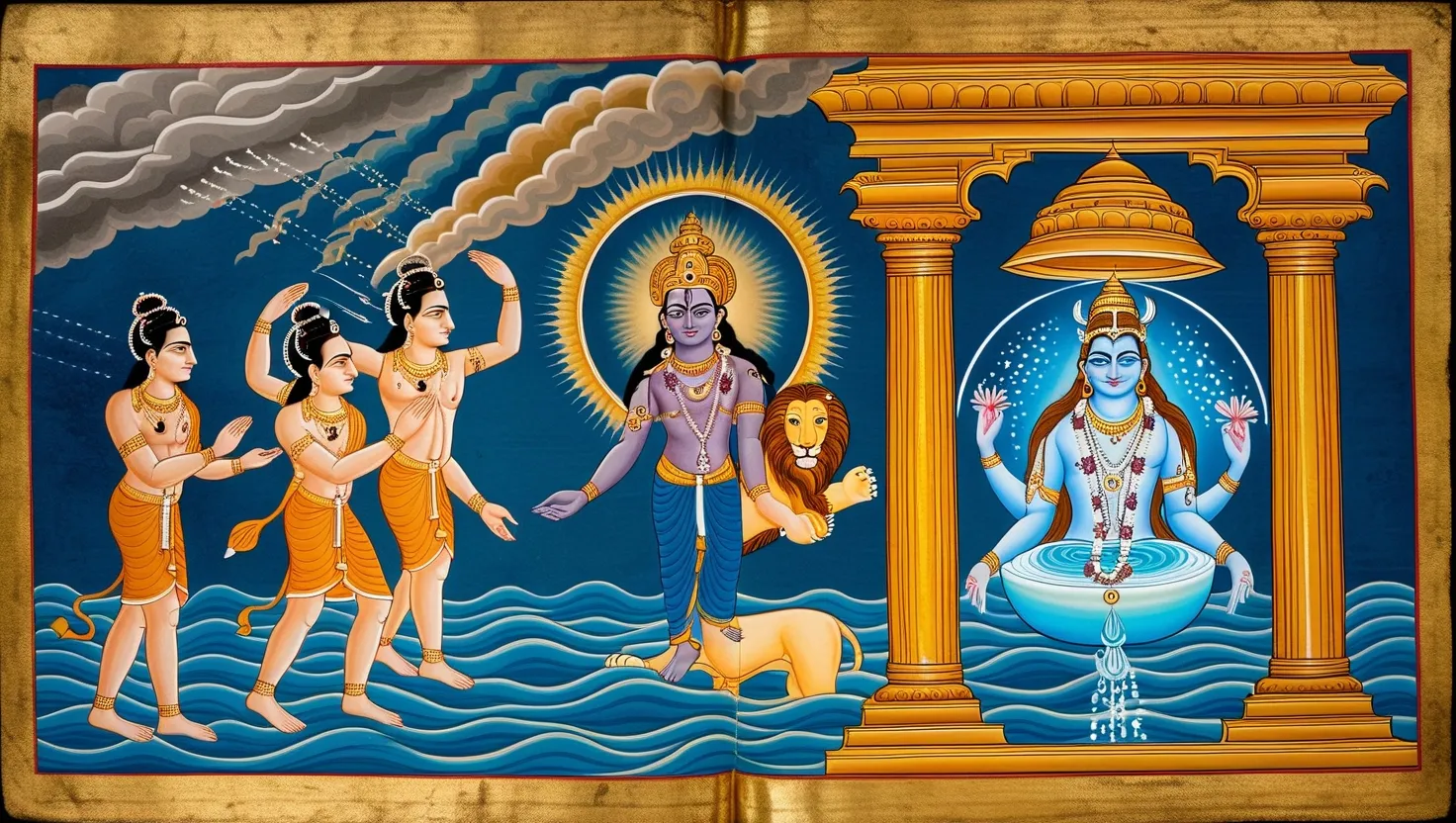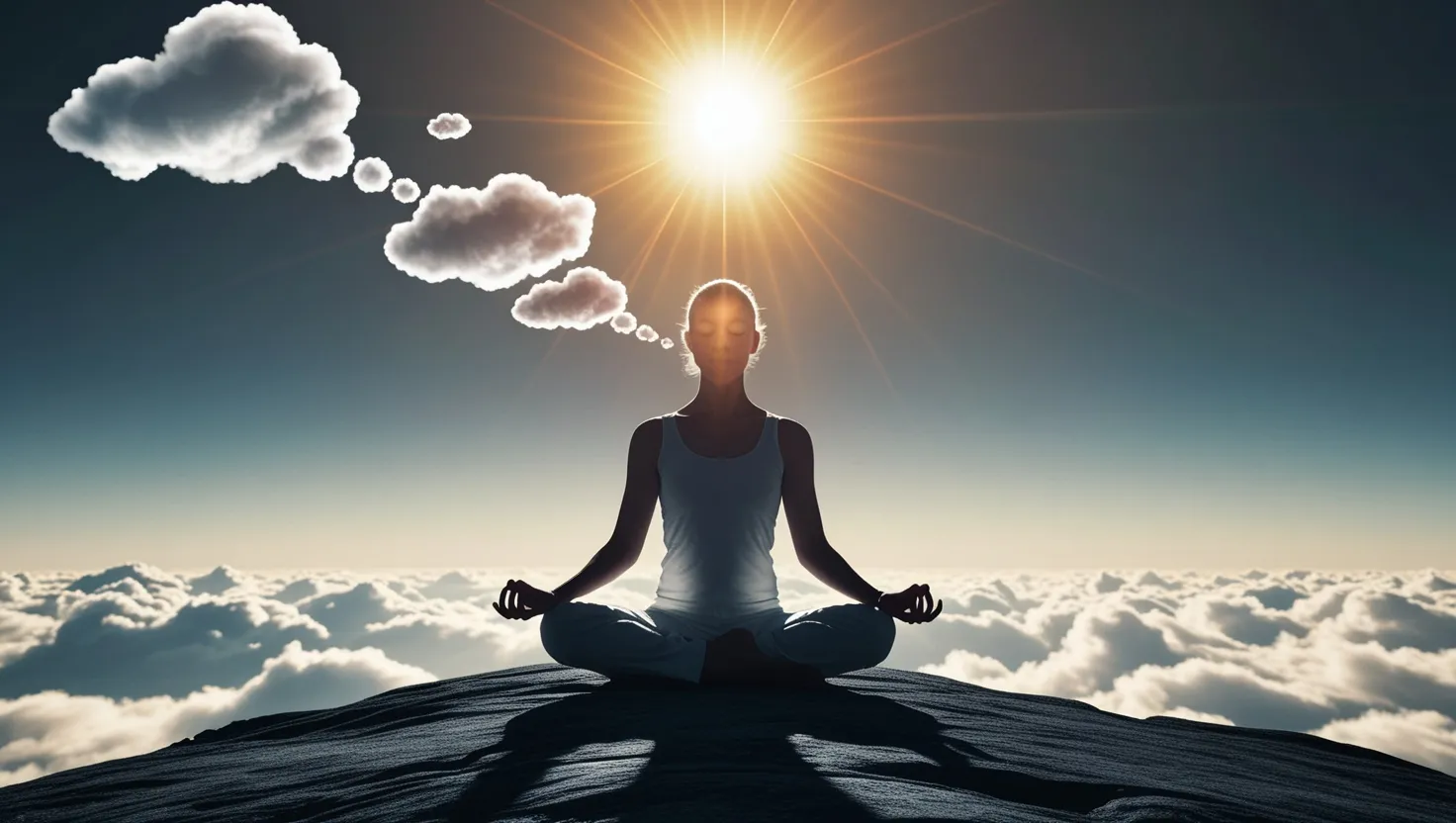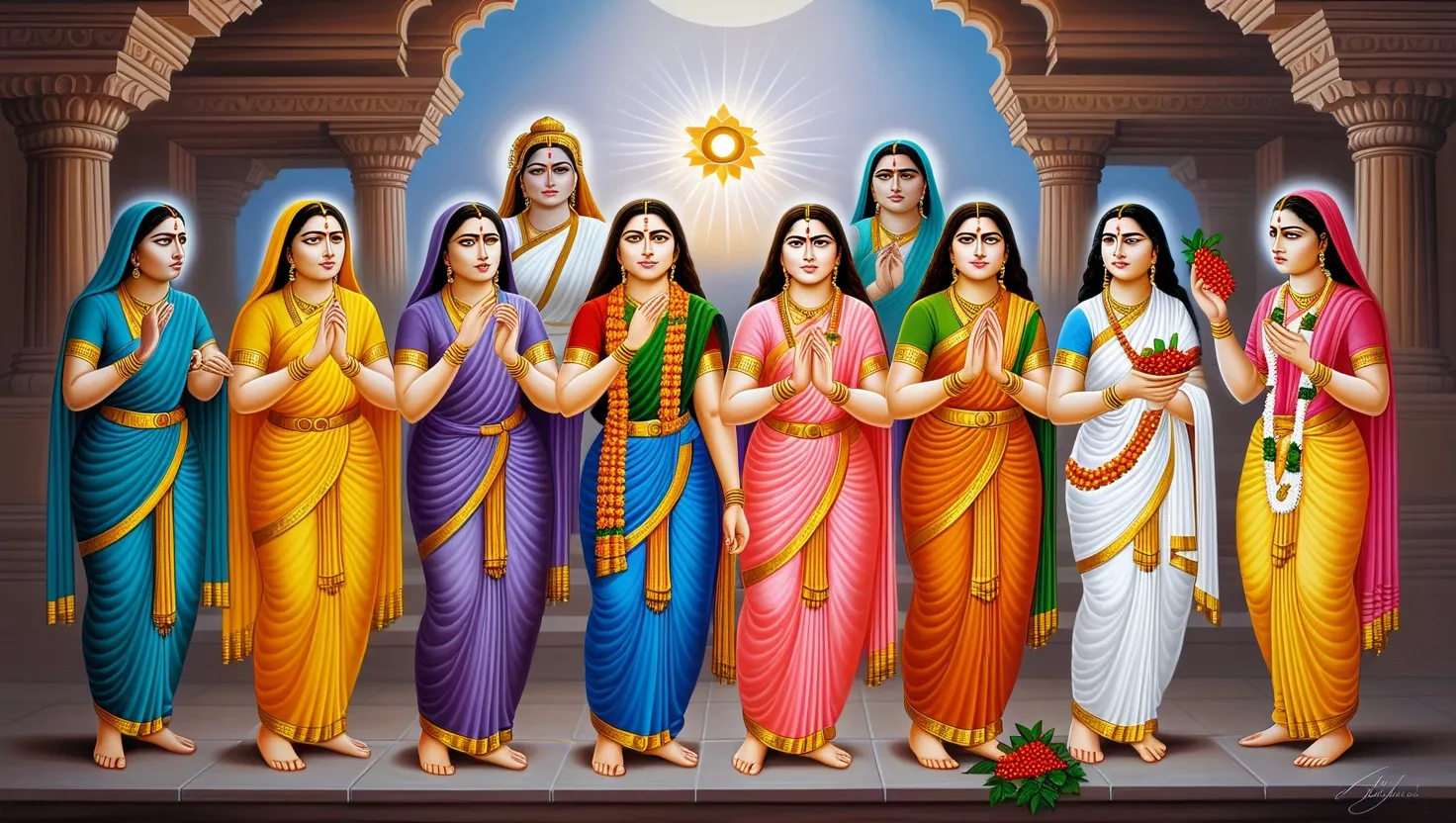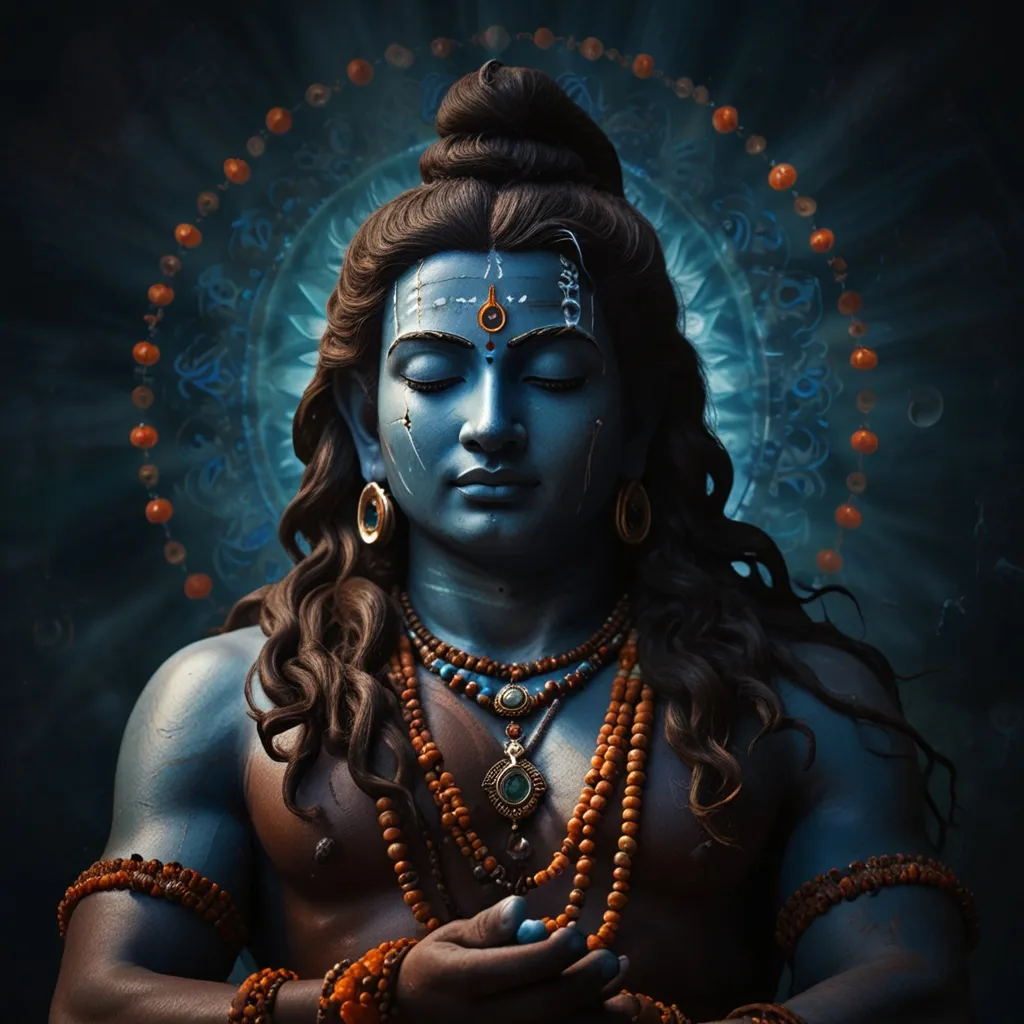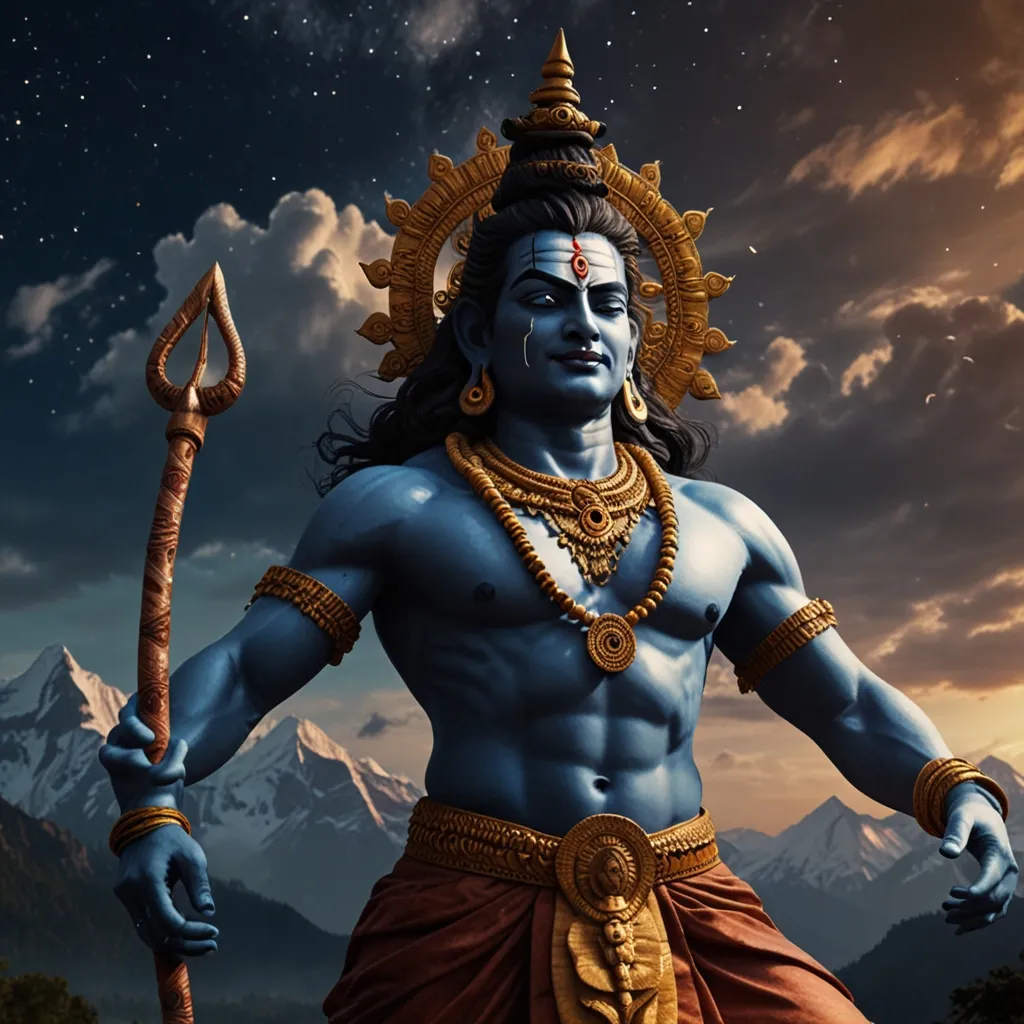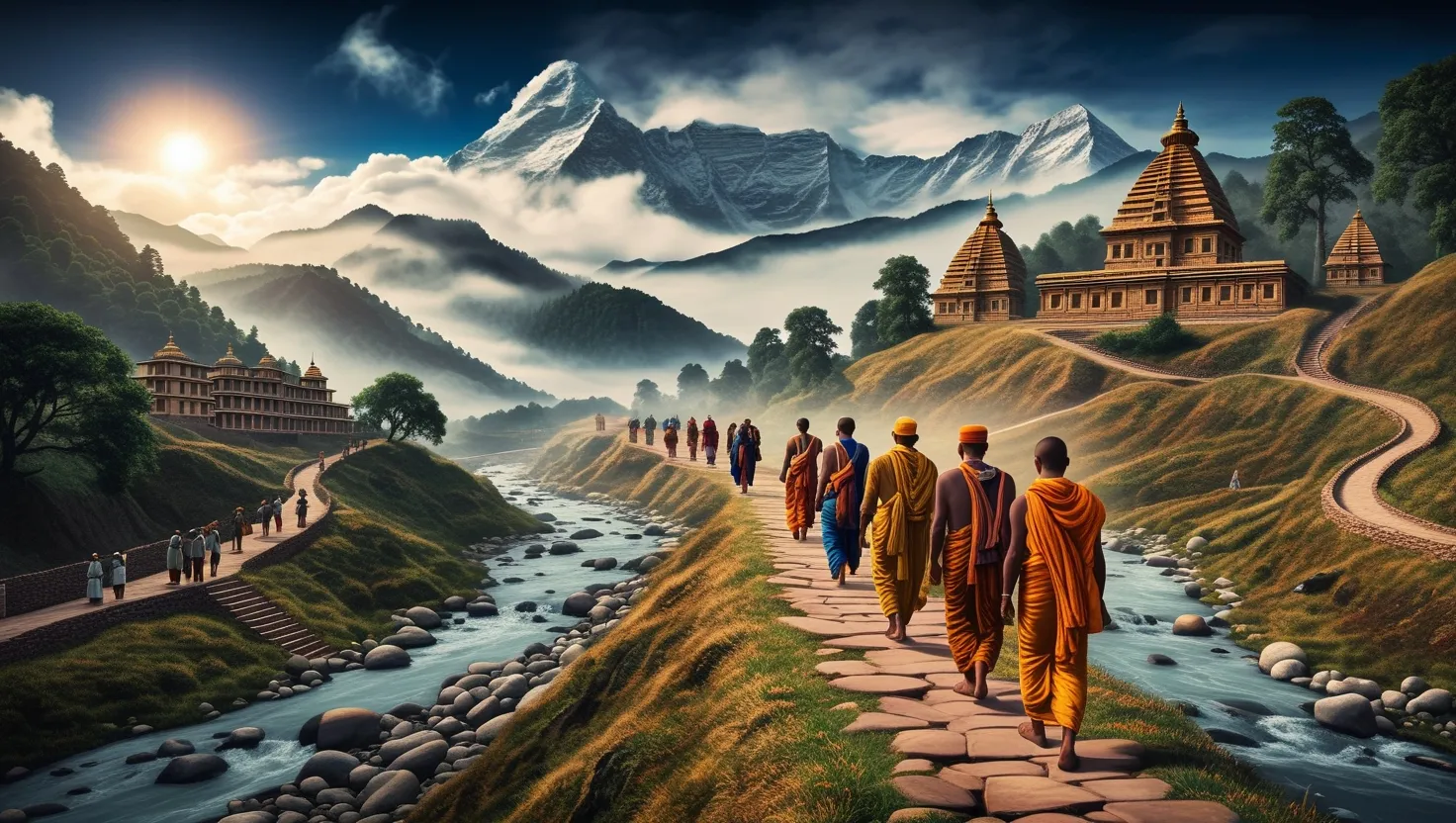The Puranas, treasured texts of ancient India, are abundant with tales where gods intervene in mortal affairs, often to restore cosmic balance or uphold dharma, the moral order. These narratives not only illuminate Hindu philosophy but also showcase the intricate relationship between the divine and the earthly. I find it fascinating to revisit these moments, which seamlessly blend the mythical with the deeply symbolic. They aren’t mere stories; they’re windows into a worldview where the universe is sustained by divine grace and intervention.
Consider Vishnu’s first avatar, Matsya, who appears as a colossal fish when the world faces a catastrophic deluge. This isn’t just a tale of mythological heroics; it’s a profound assertion about continuity amidst chaos. Imagine Manu, clutching the seeds of life in his boat, as Matsya guides him through the stormy waters. Isn’t it remarkable how this tale parallels flood myths across cultures, from Noah’s Ark to Gilgamesh’s Utnapishtim? It’s almost as if humanity, irrespective of geographical boundaries, has always believed in salvation descending from the heavens during its darkest hours.
“What you are is what you have been. What you will be is what you do now.” This quote by Buddha resonates deeply when reflecting on Krishna lifting Mount Govardhan. When the mighty Indra, in a fit of ego, showers rain upon the villagers of Vrindavan, Krishna holds the entire mountain as an umbrella. This act isn’t just an exhibition of divine power; it redefines the dynamics between gods and their devotees, prioritizing devotion (bhakti) over rigid rituals. It makes me wonder—how often does our faith shield us from the storms we cannot control?
The creation of Goddess Durga is another moment that never fails to leave me in awe. Born from the combined energy of all the gods, her emergence is a testament to the collective will of divinity acting against evil. Durga’s battle with Mahishasura, the buffalo demon, is vividly described in the Puranas as an event that transcends physical combat—it symbolizes the triumph of inner strength and the unyielding spirit. But here’s a question to ponder: Why is it that whenever evil assumes overwhelming power, it’s the divine feminine that steps forward to restore balance?
Speaking of balance, the story of Shiva drinking poison during the churning of the cosmic ocean highlights an act of unparalleled selflessness. The poison, so lethal it could annihilate the universe, is swallowed and held in Shiva’s throat, turning it blue. This imagery, while breathtaking, carries layers of meaning. Is it not a reminder that sustaining the world often demands immense personal sacrifice? As I think of this episode, I can’t help but ask: How much are we willing to endure for the greater good, especially in today’s divisive world?
The tale that chills yet inspires is Narasimha’s appearance. Hiranyakashipu thought himself invincible, his boon crafted carefully to evade mortality by any conventional means. Yet Vishnu, in his half-man, half-lion form, emerges from a pillar to deliver justice. It’s almost poetic how divine justice doesn’t adhere to human logic—it transcends it. Narasimha’s wrath feels like a warning against hubris. How often do we construct fortresses of invincibility in our lives, only to have them dismantled by forces we couldn’t anticipate?
A gentler, albeit equally powerful, intervention is Ganga’s descent. The celestial river, coursing through the heavens, is brought to Earth through King Bhagiratha’s penance. Yet her descent could have devastated the land had Shiva not contained her in his matted locks. This narrative, striking in its beauty, underscores the necessity of balance—even when blessed with abundance. Does this not mirror the environmental crises we face today, reminding us that unchecked blessings, like resources, can be as destructive as a curse?
Rama breaking Shiva’s bow at Sita’s swayamvara is one of those moments that feels almost cinematic. The unbreakable bow, a symbol of divine challenge, lies shattered in Rama’s hands, affirming his status as an avatar of Vishnu. But beyond the spectacle, this act sets the stage for the epic battle of the Ramayana. It’s intriguing to think of how such seemingly singular moments create ripples that change the course of destiny. How often do our own lives hinge on moments we don’t fully recognize as pivotal until much later?
Finally, Hanuman’s legendary leap to Lanka encapsulates the extraordinary within the ordinary. Born a vanara (monkey), Hanuman’s actions transcend species and mortal limits. His leap across the ocean isn’t just a physical feat; it’s a metaphor for the boundless possibilities unlocked through devotion and grace. How often do we underestimate ourselves until a moment of crisis reveals our hidden strengths? Hanuman’s leap still echoes with the question: What would we be capable of if we had unshakable faith in ourselves?
“Do not be led by others, awaken your own mind, amass your own experience, and decide for yourself your own path.” This sentiment ties beautifully to the stories of divine intervention in the Puranas. Each tale isn’t just about gods stepping in; it’s about the collaboration between the divine and the mortal, between cosmic forces and human effort. Whether it’s Vishnu as a fish saving life during a flood or Shiva drinking poison to protect creation, these stories are as much about humanity’s reliance on the divine as they are about the divine responding to that reliance.
Looking back at these eight moments, what strikes me most is their relevance even today. Each story brims with lessons—about faith, resilience, selflessness, and justice—that transcend time. The gods in these tales don’t merely perform miracles; they set examples, reminding us that cosmic balance often hinges on individual actions, divine or human. So, the next time life feels overwhelming, perhaps these stories hold the promise that help—often unexpected—is never too far away. All we need to ask ourselves is this: Are we ready to recognize it when it comes?
